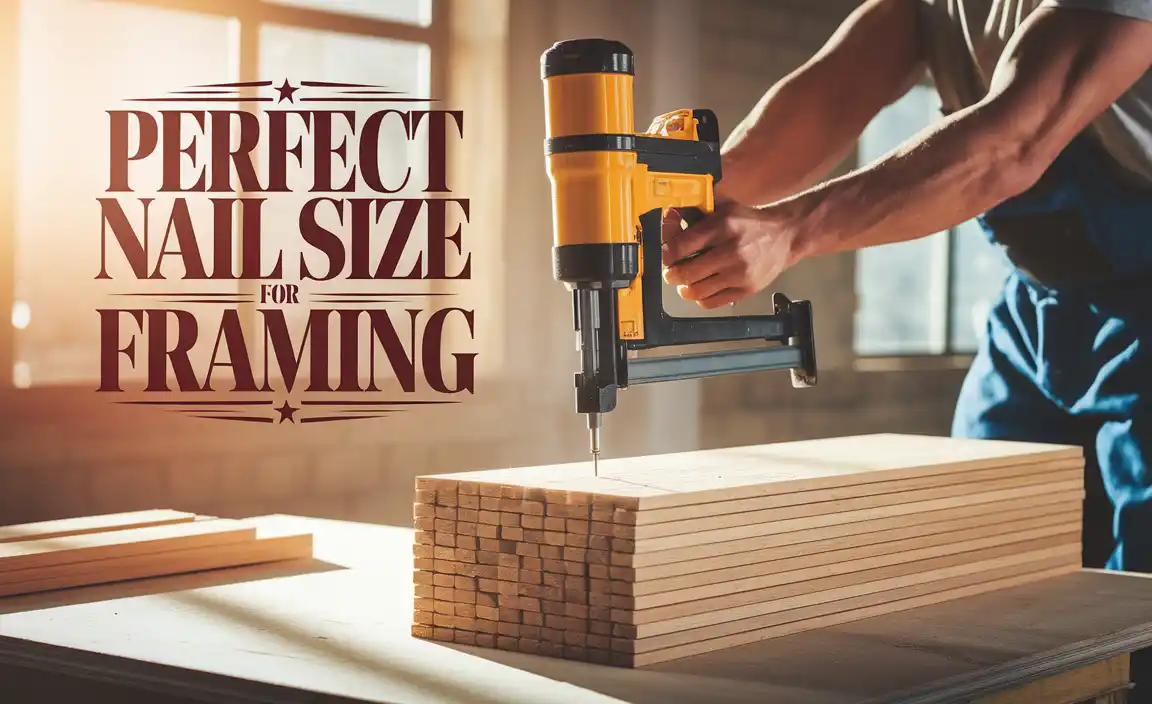Have you ever tried to make a straight cut on a piece of wood? It can be tough! If you’re into woodworking, you might have heard about two popular tools: the table saw and the bandsaw. But what’s the difference between them?
Both tools can help you cut wood, but they work in different ways. Picture this: a table saw has a flat surface and a blade that sticks up. You push the wood across it to make smooth cuts. Now, think of a bandsaw. It has a looped blade that moves in a circle. This allows it to cut curves easily.
Here’s a fun fact: many woodworkers say each tool has its own special magic. Some swear by the table saw for its speed. Others love the bandsaw for its ability to make intricate shapes. Knowing the table saw vs bandsaw difference can help you choose the right tool for your next project.
Table of Contents
Table Saw Vs Bandsaw Difference: Understanding The Key Points — When It Comes To Woodworking, Selecting The Right Tool Can Significantly Impact Your Efficiency And The Quality Of Your Work. Two Of The Most Common Power Tools Used In The Workshop Are The Table Saw And The Bandsaw. Understanding The Table Saw Vs Bandsaw Difference Is Essential For Woodworkers Of All Skill Levels. This Article Will Explore The Distinct Features, Advantages, And Typical Uses Of Each Saw To Help You Make An Informed Decision For Your Projects. Table Saw Overview A Table Saw Is A Versatile Tool Primarily Used For Making Precise Cuts In Wood. It Consists Of A Circular Blade Mounted Under A Flat Table, With The Material Being Pushed Across The Table Towards The Blade. Key Features: 1. **Cutting Accuracy**: Table Saws Are Renowned For Their Ability To Make Straight, Accurate Cuts, Particularly For Rip Cuts Along The Grain Of The Wood. 2. **Ease Of Use**: With A Larger Work Surface, Table Saws Allow For Easier Handling Of Larger Sheets Of Material. 3. **Adjustment Mechanism**: Most Table Saws Come With Adjustable Blades, Allowing For Bevel Cuts And Varying Depths. 4. **Speed**: Table Saws Generally Have Faster Cutting Speeds, Making Them Ideal For Production Work. Common Uses: – Rip Cuts – Crosscuts – Bevel Cuts – Dados And Grooves Bandsaw Overview A Bandsaw, On The Other Hand, Uses A Long, Continuous Blade That Runs On Wheels. It Is Particularly Effective For Making Curved Cuts, And Its Design Allows For Greater Versatility. Key Features: 1. **Curved Cuts**: Bandsaws Excel At Cutting Curves And Intricate Shapes, Making Them Perfect For Detailed Projects. 2. **Thickness Management**: Bandsaws Can Easily Resaw Thicker Pieces Of Wood Into Thinner Sheets, A Process That Can Be Tricky With A Table Saw. 3. **Safety**: Bandsaws Have A Lower Risk Of Kickback Compared To Table Saws, Which Can Be A Critical Factor For Beginners. 4. **Material Flexibility**: Bandsaws Can Handle Various Materials, Including Hardwood And Softwood, And Can Even Cut Non-Wood Materials. Common Uses: – Curved Cuts – Resawing – Cutting Irregular Shapes – Creating Intricate Designs Comparing Table Saw And Bandsaw 1. **Functionality**: Table Saws Are Ideal For Making Straight, Accurate Cuts, While Bandsaws Are Better Suited For Cutting Curves And Irregular Shapes. 2. **Versatility**: Bandsaws Tend To Offer More Versatility When It Comes To Different Cutting Styles, Particularly For Intricate Projects. 3. **Safety Features**: The Design Of A Bandsaw Reduces The Risk Of Injuries Associated With Kickbacks Found In Table Saws. 4. **Space Requirement**: Table Saws Typically Require More Space Due To Their Size And The Setup Needed For Larger Cuts. Conclusion In Summary, Both Table Saws And Bandsaws Have Their Unique Advantages And Ideal Applications. Understanding The Table Saw Vs Bandsaw Difference Is Crucial For Choosing The Right Tool That Aligns With Your Woodworking Needs. While A Table Saw Excels In Making Straight, Precise Cuts, A Bandsaw Shines In Versatility, Especially For Intricate Designs. By Considering Your Specific Projects And Skill Level, You Can Select The Best Saw For Your Workshop.

Table Saw vs Bandsaw Difference
Wondering about the difference between a table saw and a bandsaw? Both tools are essential in woodworking but serve unique roles. A table saw is best for straight cuts and can handle large sheets of wood. Meanwhile, a bandsaw excels at making curves and intricate designs. Did you know that a bandsaw can even slice through metal? Each tool has its strengths, depending on what you need for your project. Choose wisely to make your woodworking easier and more fun!What is a Table Saw?
Definition and primary use cases. Key features and components.A table saw is a powerful tool that helps cut wood and other materials easily. It’s a favorite for many woodworkers. You can use it to make straight cuts and precise angles. This makes it great for building furniture or crafting projects.
Key features include:
- A flat surface to support materials.
- A circular blade that spins to cut through wood.
- Adjustable settings for depth and angle of cuts.
These components make it a must-have for projects where accuracy is important.
What are the main uses of a table saw?
The main uses of a table saw include:
- Ripping wood: Cutting along the grain.
- Crosscutting: Cutting across the grain.
- Making precise angles: Perfect for corners and joints.
What is a Bandsaw?
Definition and primary use cases. Key features and components.A bandsaw is a tool designed for cutting things. It uses a long, sharp blade that moves in a loop. Think of it like a giant rubber band, but much sharper! Bandsaws are great for cutting curves and odd shapes. They are often used in woodworking, metalworking, and even for cutting meat. Their main parts include the blade, wheels, and a table to support the material.
| Key Features | Description |
|---|---|
| Blade | A moving band that slices through material. |
| Wheels | Two wheels that help the blade move smoothly. |
| Table | Flat surface for holding the material being cut. |
In short, bandsaws are the acrobats of cutting tools, bending and twisting to create amazing shapes! Who knew woodworking could be so fun?
Core Differences between Table Saw and Bandsaw
Blade types and cutting capabilities. Accuracy and precision in cutting.Both table saws and bandsaws have special blades for cutting wood. A table saw uses a flat, sharp blade while a bandsaw has a long, looped blade. This difference makes them good for different tasks. Table saws are great for straight cuts, while bandsaws shine at making curves and intricate shapes.
In terms of accuracy, table saws are usually more precise for straight cuts. Bandsaws can offer good precision for complex shapes, but may require more skill. Both tools can create smooth edges when used properly.
What are the key differences in cutting capabilities?
Table saws excel at straight cuts, while bandsaws handle curves better.Blade Types:
- Table Saw: Flat, sharp blade.
- Bandsaw: Long, looped blade.
Accuracy:
- Table Saw: Highly precise for straight cuts.
- Bandsaw: Good for complex shapes but needs skill.
Best Applications for Table Saws
Ideal materials for table saw usage. Types of projects suited for table saws.Table saws shine in woodworking. They work best with flat, smooth materials. Wood is the top choice. Softwoods and hardwoods cut well. You can use them for:
- Cutting large sheets of plywood
- Making precise crosscuts and rip cuts
- Creating furniture pieces
- Constructing cabinetry
For projects needing straight, clean cuts, a table saw is perfect. It gives speed and accuracy. Plus, it’s great for repeated cuts. Using a table saw can save time and help you build amazing things!
What type of materials can you use with a table saw?
You can use plywood, softwood, and hardwood for various woodworking tasks. Make sure the material is smooth for the best results.
Best Applications for Bandsaws
Ideal materials for bandsaw usage. Types of projects suited for bandsaws.Bandsaws are fantastic for various projects! They excel at cutting materials like wood, metal, and even meat—yes, you heard right! Plan to create curved shapes or intricate designs? Bandsaws are your buddies. They shine in woodworking projects, furniture designs, and even crafts. Plus, they’re great for slicing up those big lumber pieces you’ve got. Why struggle with other tools when you can dance your way through projects with a bandsaw? It’s like magic, but with fewer rabbits and more wood!
| Ideal Materials | Types of Projects |
|---|---|
| Wood | Furniture Making |
| Metal | Art Projects |
| Meat | Butchering |
So, grab your bandsaw and let’s cut through the fun!
Portability and Space Considerations
Size and weight comparisons. Ideal workspace recommendations.Choosing between tools? Let’s consider size and weight! A table saw is usually bigger and heavier than a bandsaw. This means it needs more room in your workshop. On the bright side, you can have plenty of space for cutting big wood pieces. Bandsaws, on the other hand, are lighter and easier to move. This makes them a great choice for smaller spaces. Imagine having a tool that’s light as a feather—well, almost!
| Tool | Size | Weight |
|---|---|---|
| Table Saw | Large | Heavy |
| Bandsaw | Compact | Lightweight |
For ideal workspaces, make sure you have enough room. A table saw needs a nice, wide table. A bandsaw loves a snug corner, where it can fit right in. Remember, more space means less chance of bumping into things while you cut. Safety first!
Safety Features and Practices
Safety mechanisms in table saws. Safety mechanisms in bandsaws.Both table saws and bandsaws have special safety features. These help keep users safe while working. For table saws, common safety features include:
- Blade guards that cover the blade when not in use.
- Kickers that stop the blade when it senses a hand.
- Blade guides that keep the blade steady.
- Emergency stops that stop the machine quickly.
What are the main safety features of these saws?
The main safety features of table saws include blade guards and emergency stops. Bandsaws use blade guides and quick stops.
Cost Analysis
Price ranges for both tools. Factors influencing cost differences.Buying a tool means thinking about the price. Both table saws and band saws have different price ranges. You can find table saws for about $200 to $3,000. Band saws usually cost between $150 and $2,500. Here are some reasons why prices vary:
- Size: Bigger tools are often more expensive.
- Quality: Well-made tools last longer.
- Features: More features usually mean a higher price.
Think about what you need. Your choice can lead to some savings!
What is the average cost for a table saw and a band saw?
The average cost for a table saw is $600. For a band saw, it is around $400. Knowing this helps you decide what to buy.
Maintenance and Longevity
Maintenance requirements for table saws. Maintenance requirements for bandsaws.Keeping tools in good shape takes some effort. For table saws, check the blade regularly and keep it clean. You should also lubricate the moving parts. Change the oil on time to keep it running smooth. Bandsaws need care too. Make sure the blade is tight and clean. Check the tires on the wheels, as they help keep everything in line. Each tool can last a long time with regular maintenance.
How often should I maintain my saws?
You should check your table saw weekly for dirt and blade sharpness. For bandsaws, inspect them every month. This helps them work better and last longer.
Expert Recommendations
When to choose a table saw over a bandsaw. When to choose a bandsaw over a table saw.Picking between a table saw and a bandsaw can feel like choosing your favorite ice cream flavor—so many options! If you’re making long, straight cuts, grab a table saw. It’s like a superhero for big boards! But when curves and intricate shapes come into play, the bandsaw is your trusty sidekick. It’s perfect for cutting circles or fun designs. Remember, your project’s needs will guide your choice!
| Tool Type | Best For |
|---|---|
| Table Saw | Long, straight cuts |
| Bandsaw | Curves and shapes |
Now you know! Choose wisely, and may your cuts always be straight and true!
Conclusion
In summary, table saws are great for straight cuts and efficient at handling large pieces. Bandsaws excel at curved cuts and can cut thicker materials. Both tools have unique advantages. Think about your projects when choosing. Try each tool if you can, and read more to understand their uses better. Happy woodworking!FAQs
What Are The Primary Differences In Cutting Capabilities Between A Table Saw And A Bandsaw?A table saw is great for making straight cuts on flat pieces of wood. It has a blade that goes up and down, which helps you cut easily. A bandsaw, on the other hand, has a long, moving blade that can also cut curves. You can use a bandsaw to shape wood, but it can’t cut as wide pieces as a table saw. So, if you want straight cuts, use a table saw. If you want to cut curved shapes, go for the bandsaw!
How Do The Safety Features Of A Table Saw Compare To Those Of A Bandsaw?Table saws have safety features like blade guards and automatic shut-off. These help protect you from getting hurt. Bandsaws have safety features too, like sharp blade covers and emergency stops. Both tools need you to be careful, but table saws often have more built-in safety gear. Always remember to follow safety rules with any saw!
In What Scenarios Would A Woodworker Prefer Using A Bandsaw Instead Of A Table Saw?You might choose a bandsaw when you want to cut curves or circles. A bandsaw can make narrower cuts than a table saw. It’s also great for cutting thick wood pieces. If you want to slice wood into thinner sheets, a bandsaw works well too.
How Do The Maintenance Requirements Differ Between A Table Saw And A Bandsaw?A table saw needs you to clean its surface and check the blade often. You should also keep the table flat. A bandsaw requires you to adjust the blade tension and check the tracking. You need to keep the wheels clean too. So, a table saw focuses more on the table, while a bandsaw needs attention on the blade and wheels.
What Are The Cost Differences Between Purchasing A Table Saw And A Bandsaw, And How Do Those Costs Influence A Buyer’S Decision?A table saw usually costs more than a bandsaw. You might pay around $500 for a good table saw and $300 for a basic bandsaw. The higher price for a table saw means you need to think carefully about your budget. If you’re just starting, a bandsaw could be a better choice to save money. You can use the savings to buy other tools or materials.






